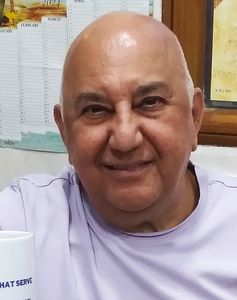It’s 40 per cent fitness, 60 per cent fix,” I always gleam while sharing my fitness goal with fellow exercisers. The ‘fix’ of course is the irresistible high one experiences as serotonin and dopamine kick in with every bicep curl. Exercising is addictive.
However, like binge-drinking or overeating, the repeated overuse of muscles comes with a painful price. The persistent, sharp subacromial pain on my left shoulder said it all―the hangover from the drop sets and the gruelling Mike Tyson push-ups coupled with lack of recovery time and incorrect technique. Fortunately, an occupational therapist ruled out tear or impingement (pinching of the rotator cuff) and diagnosed my condition as repeated strain injury (RSI).
Also called repetitive strain or repeated use injury, RSI can become a prolonged, even chronic condition involving pain, stiffness, weakness and hampered movements that an overused muscle suffers because of mistakes in exercise, sports or even professions that involve strenuous repetitive movements for long periods of time. RSI takes its time to heal and enduring it can be frustrating, putting both fix and fitness on the back-burner!
Applying ice daily to curb inflammation along with simple range of motion and mobility exercises like pendulums, flexion, abduction and extensions using a stick, strengthening with isometric holds and movements using light weights gradually railroaded me on the path to recovery.
Tenets of technique
“It’s not always about repeated activity but rather wrong technique”, says Ali Irani, head of physiotherapy and sports medicine at Mumbai’s Nanavati Max Hospital. The former physio for the Indian cricket team explains that performing repeated movements in the right way does not harm, but in fact improves the muscle. “If a player throws the ball from the boundary and his shoulder is seen, the ball was not thrown right,” he says. “The correct technique is to rotate the trunk. Even if he throws the ball a hundred times, it is not going to affect him as compared to throwing with the wrong technique, which can cause shoulder pain.”
According to him, the first line of treatment is to tackle the inflammation, swelling or bleeding by merely applying ice for the first 72 hours within which period, an X-ray, a sonography or a blood test are carried out to evaluate the condition following which rehabilitation begins. “Each joint is different,” he says. “Range of motion, mobility and strength go hand in hand. The former cannot be achieved without the latter.”
Sportive saga
In February, Sameera (name changed), a 22-year-old tennis player from Mumbai, who was training in Bengaluru, approached physiotherapist Anaita Nambiar at Nanavati Max Hospital complaining of persistent wrist pain. “Her pain was near the little finger's ulna border; only while playing, which involves twisting movements, rather than during daily activities like lifting heavy objects or playing with her pet,” says Nambiar.
Sameera's usual three-hour playing time was reduced to one every alternate day. “The tendons around her wrist are a bit weak, indicating repetitive use,” says Nambiar. “A physiotherapist in Bengaluru helped her with mobility, but the pain became unbearable. She required strengthening as well.” Nambiar believes in a cautious approach to Sameera's predicament. “My focus is on relieving her of inflammation and not disturbing her already affected tendon,” she said. “The treatment focuses on strengthening, particularly of her ulna area in the outer wrist.” Nambiar also added that before one begins a sport, one must ascertain if one’s body is made for it in terms of posture and muscle strength, among other factors.
The pain, Sameera shares, began mildly some months ago, fluctuated and finally escalated to unbearable. However, she continued playing tennis with intermittent manual release sessions for the forearm and right shoulder. “Around six months ago, the sharp pain became so unbearable that I had to abruptly end my tennis session,” she says. “I couldn't even hold the racquet.”
The condition, she believes, could have developed because of tightness and the repeated swinging motion during tennis.
Sameera's treatment includes mobilisation glides focused on the wrist, strengthening protocols like wrist flexion and extension with radial deviation, ultrasound to monitor inflammation and strengthening of other joints in the upper limb which helps to hold and mobilise the wrist joint. This includes the elbow for which she is made to practise biceps, triceps and shoulder strengthening exercises with a 1kg dumbbell. “Depending on her pain scale on that particular day, we alternate between 1/2kg or 1kg weighted cuffs on her wrists,” says Nambiar. “It is a tendinopathy she developed back in December. Although the passionate Sameera yearns to get back to her sport and her pain has gradually reduced to a 2/10, rehab is an ongoing process and strengthening invariably takes its time.”
Bulking-up blues
“Gym trainers these days are products of weekend courses,” Irani laments. “They have no knowledge of anatomy of physiology.” The Indian gym scenario is plagued with lack of goal-setting and the tendency to push exercisers solely for muscle bulk. “In our time, the condition was called ‘overuse injury syndrome’. Many trainers need to follow weight training principles which include muscle strength, endurance, functional training, opposing muscle groups, to name a few, to prevent muscles from getting habituated with just one form of workout” explains celebrity fitness trainer Leena Mogre.
A lot of walkers and runners, she believes, develop knee injuries. The joints can get injured by overuse, like the knee which is a hinge joint. “The key is to strengthen the muscles around the joint,” says Mogre. “Hairdressers, for instance, often suffer from back pain as an occupational hazard that develops over time because of continual standing, as the core (abs, back and hips) may not be strengthened. “The bones rub against each other and the muscles weaken unless one strengthens them through muscle training to avoid RSI.”
According to Mogre, those engaging in leisure sports like badminton develop injuries immediately as they are not fit for the sport. “People want to ‘play sports to get fit’ while it should be the other way around,” she says.
What about recovery time during exercise? “There are various types of muscle training programs,” says Mogre. “Circuit training involves no rest between sets while many may involve just 30 or 90 seconds of rest. Post-workout rest and rejuvenation is vital. I recommend two days off in a week. If you’ve worked out intensely for two weeks, go lighter the following two weeks. In case of such injuries, change your exercise routine.” Alternatives like cycling, dancing or even strolls, she says, can work magic.
Mogre says inflammation is a trending word today, thanks to celebrities and social media. “As long as there is no rest and rejuvenation, there will always be inflammation in the body as you push your workout,” she says. Her advice to gym-goers is to have their own goals and schedules rather than idolising celebrity physiques. For beginners, she recommends a fitness assessment before joining a gym. It covers aerobic capacity, muscle endurance, flexibility and fat percentage, followed by designing a goal-based schedule.
Weeding out the woes
“For any skeleton-muscular pain, especially for a 35-plus patient, if the blood sugar and vitamins D3 and B12 can be tackled through testing just one blood sample, the pain can be resolved without any further treatment,” says Irani. He adds that D3 and B12 are usually low among Indians. “While syrups are slow-acting, an injection can provide instant relief,” he says. According to him, merely being in the sun is not a source of these vitamins. It is the magnesium in the body that helps absorption.
He is conviced that patients can avoid unaffordable tests if just these two are tested. “Nine out of ten shoulder patients are diabetic,” he says. “If the HBA1C test reveals a reading above 6 or 6.2, the sugar must be controlled and the pain will go. We can treat the mechanical problem but what about the pathology? One can start exercises first but it won't help much if there's something lacking in the body.”
Even surgeries, he says, don’t really help if the D3 and B12 are low. Shoulder conditions like bursitis and tendinitis, he explains, can be treated just by applying ice three to four times a day. “There are certain shoulder movements most people cannot perform,” he says. “They don’t need them anyway”. Rather, he considers daily routine movements like pulling on a shirt or holding the bar in a train which requires pushes from all sides for the upward movement. “One of my treatments [for] frozen shoulder is to travel by local train to Churchgate,” he says. “By the time you reach, your shoulder will open up.”
For more debilitating conditions like rotator cuff tears, he is meticulous, yet optimistic. If sugar, D3 and B12 are normal, then, he believes, an MRI can help. “However, an immediate MRI could be incorrect,” he says. “Let the pain, inflammation or bleeding settle. The shoulder is multi-ligament. With half or one tear, one need not worry. If we strengthen the other ligaments, they take over.”




